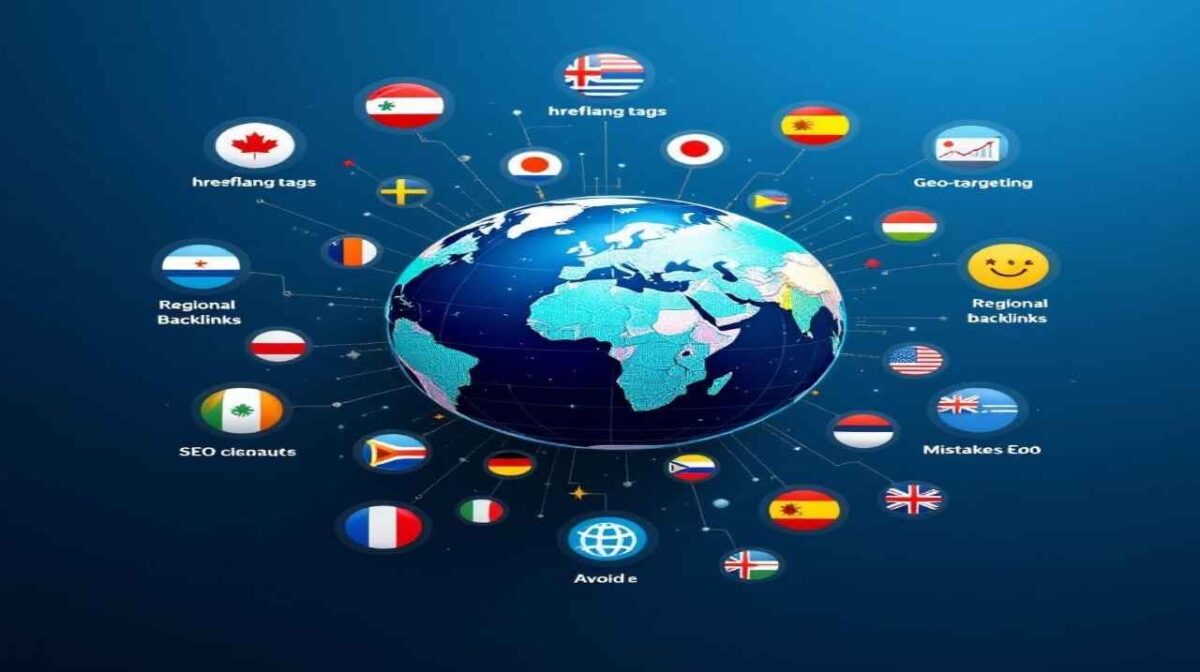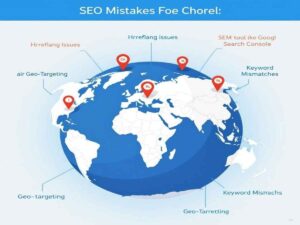Avoid These Common International SEO Mistakes for Global Success

Growing your business internationally is an exciting achievement, but it’s not without its challenges. International markets are great, but they also need region-specific strategies that work, and this applies to search engine optimisation. Mistakes in global SEO can mean lost visibility, poor user experience, and hours or weeks of work down the tube.
But don’t worry — we’re here for you. This checklist shines a light on some of the most common mistakes companies make when rolling out international SEO, as well as takeaways on what to do instead. By the time you emerge, you’ll know exactly how to make your website work flawlessly across the globe.
What is International SEO and Why Does It Matter?
International SEO includes optimizing your website for users in many regions and language pairs. It tells search engines such as Google, Baidu, or Yandex who your content is intended for and what region it should be shown in.
While local SEO is concerned with targeting a local area or single country, international SEO includes the world. Whether it’s French-Canadians or people in Japan getting country-specific versions of content, being effective with international SEO means bringing user-focused, local-market content to sites around the globe.
When done correctly, international SEO can open your brand to burgeoning markets, skyrocket conversions, and enhance brand credibility worldwide. But getting it wrong? That’s a recipe for bad user experiences, low ranking positions and lost revenue.

Seven Common International SEO Mistakes and How to Fix Them
1. Ignoring Local Search Engine Preferences
Although Google is the search engine leader the world over, other search engines are more popular in other areas. (The Chinese leader is Baidu and in Russia it is Yandex.) Just being optimized for Google is not enough to get visibility in these markets.
Solution: Tailor your SEO efforts to local search engines’ dominant search engines preferences. You’ll need to understand their algorithmic variances, keyword factors, and indexing methods.
2. Not Using Hreflang Tags Correctly
Hreflang tags direct search engines to show users the right language or regional URL. If it is done incorrectly it can confuse the search engines and the result is displaying a different page in search results.
Solution: Use hreflang tags to point search engines to the right page for a specific language or country. For example, <code>hreflang=”en-us”</code> for U.S. English and <code>hreflang=”en-gb”</code> for U.K. English. Consult tools like Google Search Console to verify their implementation.
3. Using Generic Keywords Across Regions
What’s a key word in one country could be an empty phrase in another. For example, it is “soccer” in the U.S., but “football” in the U.K.
Solution: Do keyword research by region to see what people like in a local area and what they are searching for there. Use SEMrush or Ahrefs or any other SEO tool to find similar, gain keywords in other countries.
4. Overlooking Content Localization
A basic word-for-word translation isn’t going to cut it. The difference and nuances in culture, the way of speaking and the user preference is critical for the relevant content that will be accepted by the targeted audience.
Solution: Go beyond translations. Concentrate on localization not only through the language but tone, the images used and even color schemes to cater for each regions desired preferences. Professional translators and automated localization services like Lokalise can be your friends.

5. Mismanaging Duplicate Content
One of the biggest pitfalls of creating language or region specific pages is duplicate content. If you don’t handle this situation well, search engines could bump down your rankings.
Solution: Devices should be informed with the help of canonical tags about which version of the page is the most important for them to index. Otherwise provide distint content for each area so as to be more trimmed to specific cultural and geographical needs/situations.
6. Failing at Geo-Targeting
It uses Geo targeting to make visitors land on the version of your site for their country. If misapplied, users may be presented with information that does not match their interests.
Solution: Make sure your domains use country TLDs (like. de for Germany) or subdirectories (example. com/de) to localise down to the individual user. Enable geo-targeting in Google Search Console and check server locations to ensure site loads are faster in certain countries.
7. Ignoring Regional Backlinks
Backlinks remain a crucial ranking signal in SEO, and international links are no exception. Relying solely on general backlinks won’t help establish authority in foreign markets.
Solution: Get some local influencer, local business, and local directory links and build some nice clean links from the area. For instance, writing guest posts for regional websites can be a great way to raise the profile on your local SEO.
Addressing Language Barriers and Cultural Nuances
Huge success in international locales only happens when you respect and understand the language and culture of your audience.
- Localise Beyond Language: So directness can work for German guys, but not necessarily for Japanese boys.
- Adapt Content Tone: Use the culture and traditions of the target country. It makes sense in some English-speaking destinations to use an informal and casual tone, however, in some places, they might want you to be more formal.
- Leverage AI Tools Wisely: Look at services such as DeepL to guarantee good translations, but never publish localisation output without someone checking if the content is culturally sensitive.

The Technical Side of International SEO
Key Aspects to Consider In order to succeed in technical SEO with an international audience, consider the following key components:
- Site Structure: Choose between country-specific domains (e.g., brand. de) vs. subdomains (e.g., de. brand. com). Both have pros and cons, but typically country-specific domains offer stronger geo-targeting signals to search engines.
- Mobile First: Much of the world is mobile-first. Provide quick load times and be responsive on all device.
- Server Location: Hosting your site closer to your visitors will result in better performance and more rapid loads.
Monitoring International SEO Performance
No good plan fails to measure and manage performance. In order to refine over time, monitor these measures:
- Traffic stats per region using Google Analytics.
- Conversion rate of landing pages by country and language.
- Conversion rates in different regions.
SEO platforms like Ahrefs or SEMrush can also provide valuable insights on regional search rankings and backlink profiles.

Actionable Takeaways for International SEO Success
Going global gets to the crux of strategy and not falling victim to general SEO fails. So, focus on your user first (which includes translating/ localizing content, optimizing technical SEO for the regional audience and respecting language and cultural sigmas). Digging a little further into tactics such as hreflang and local backlinks will pay off in the long run.
For companies that are uncertain where to begin, an international SEO expert can be a game changer. If you would like to Discuss And Discover More, then you can reach us based on your location, or check out our SEO consultancy pages for more information and contacts locally and globally.
Frequently Asked Questions (FAQ)
What is the International SEO and why it is important?
International SEO refers to scaling your website in different countries/language to reach out to international (global) audience. Businesses looking to diversify their reach and serve different markets effectively cannot ignore it.
What are the key points of international seo success?
Some strategies include Localized content Optimize your site for the local audience Use hreflang to deal with multilingual sites and Get regional backlinks. These methods also improve search engine position and the user experience in any language.
What are the advantages of hreflang for an international SEO strategy?
Hreflang tags help search engines determine which language or regional version of a page on the site, to serve to users. This can help to avoid duplicate content concerns and get the best possible version of your content in front of the best possible viewers.
Why would international organisations want to concentrate on technical SEO?
Technical SEO helps to make your site work well across all regions, including things like mobile-friendliness, page load speed, and indexing the right way. Well then improving these factors leads to globally improved search engine visibility and user satisfaction.
How would consulting an SEO specialist assist in a global strategy?
Specifically, a global SEO specialist gives personalized guidance and recommendations on market-specific opportunities, as well as recommendations on how to put solid strategies in place that will set brands up for long-term success within international markets. Their specialized knowledge streamlines complicated procedures to reduce them to something understandable and quantifiable.





